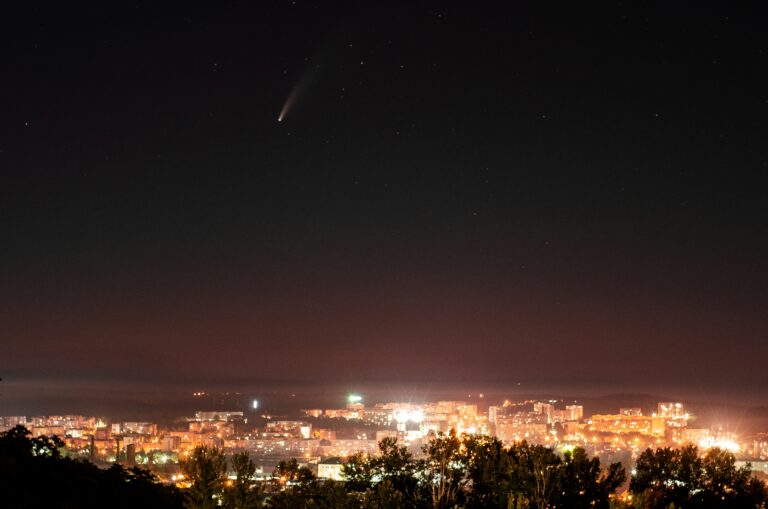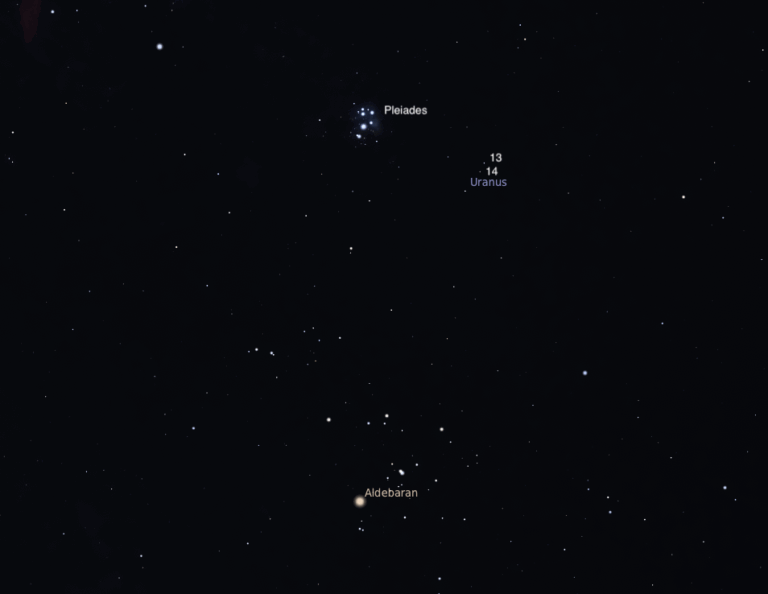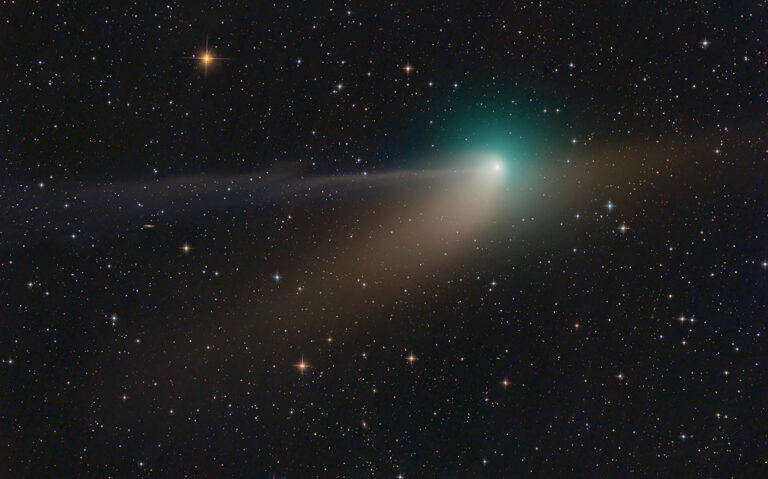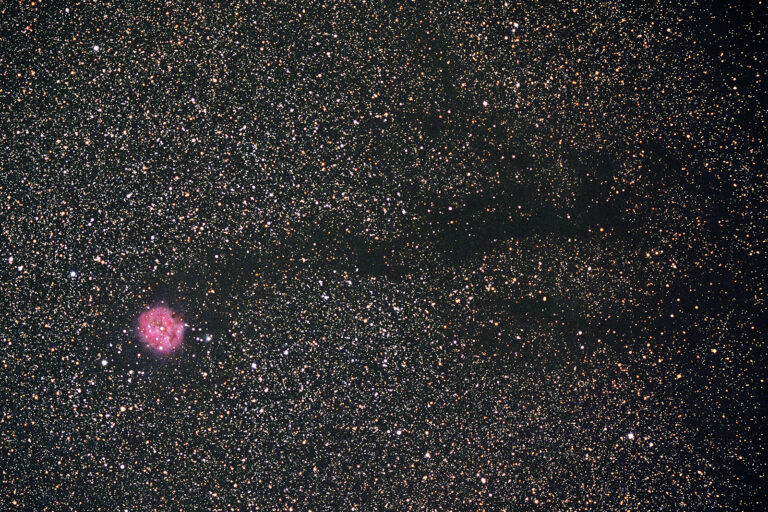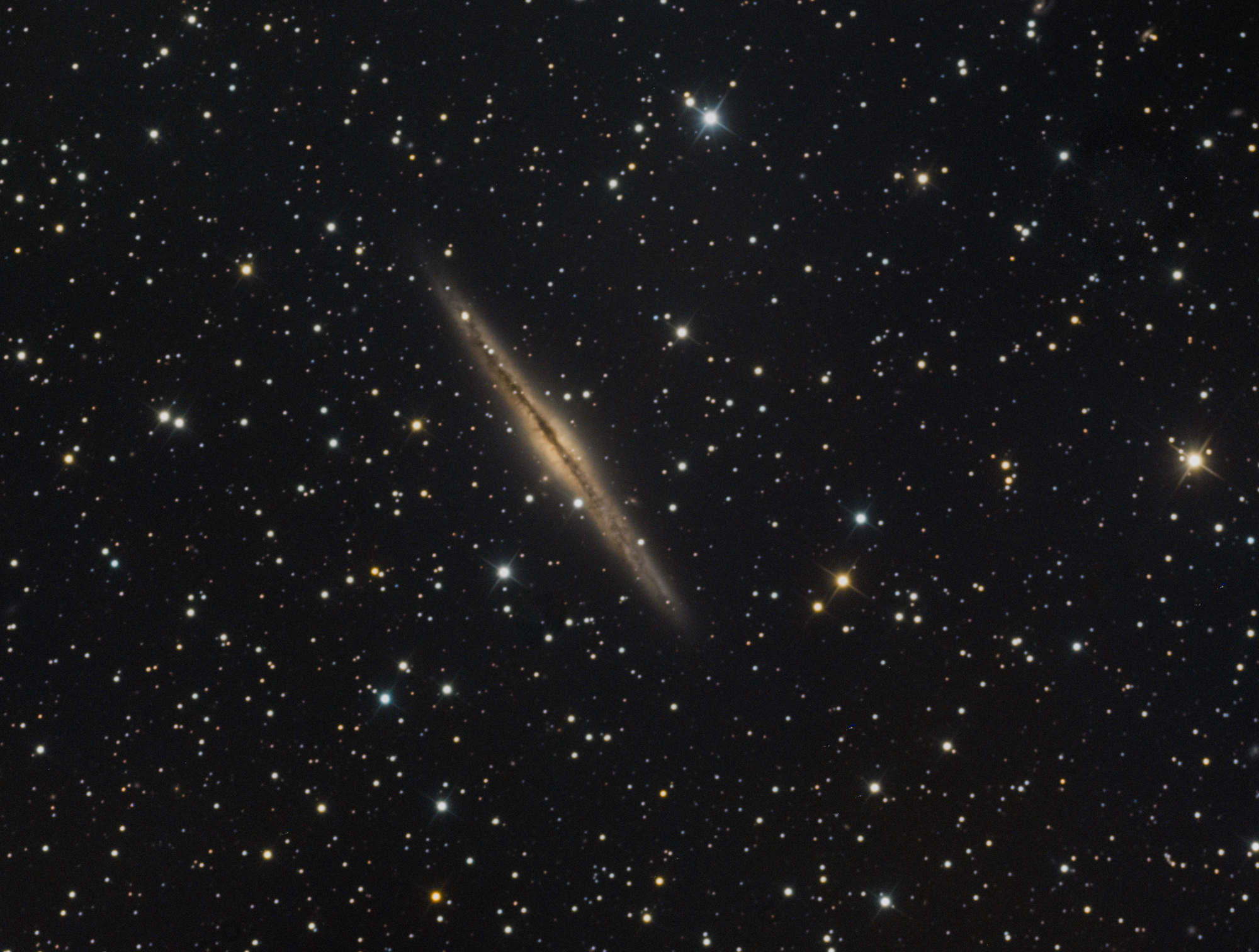
Key Takeaways:
- On November 22, Titan will transit Saturn.
- The Silver Sliver Galaxy (NGC 891), an edge-on spiral measuring 13’ by 3’ and glowing at magnitude 9.9, is observable 3.5° east of Almach (Gamma Andromedae) in the constellation Andromeda, with optimal viewing occurring after moonset and larger apertures potentially revealing its dark dust lane.
- On November 24, Venus (magnitude –3.9) and Mercury (magnitude 2.9) will appear separated by 1.5° in the eastern pre-dawn sky, approximately half an hour before sunrise, with Mercury requiring binoculars for visibility.
- Telescopic observation of this conjunction reveals Mercury as a 9”-wide disk with a 7 percent lit crescent phase, while Venus displays a 10”-wide disk that is 98 percent illuminated in a gibbous phase.
Looking for a sky event this week? Check out our full Sky This Week column.
November 22: Titan transits Saturn
Andromeda the Princess is high in the evening sky after dark. Best known for the eponymous Andromeda Galaxy (M31), there is so much more to see in this royal domain, including the lovely edge-on spiral we’re targeting tonight: the Silver Sliver Galaxy (NGC 891).
Wait until after moonset, then pull out your telescope and point east. Look for Almach (Gamma [γ] Andromedae), shining at magnitude 2.1. The Silver Sliver is just 3.5° east of this star. Floating in a rich field of Milky Way Stars, NGC 891 glows at magnitude 9.9. That puts it within the range of small telescopes, though larger apertures will, as ever, reveal more detail. (For example, scopes 10 inches or larger should show the dark dust lane neatly bisecting the galaxy’s plane.)
True to its name, the Silver Sliver is much longer than it is wide, as we’re viewing its spiral disk edge-on. Inclined just 1.4° to our line of sight, it appears some 13’ long and only 3’ wide.
Sunrise: 6:55 A.M.
Sunset: 4:38 P.M.
Moonrise: 10:13 A.M.
Moonset: 7:03 P.M.
Moon Phase: Waxing crescent (13%)
*Times for sunrise, sunset, moonrise, and moonset are given in local time from 40° N 90° W. The Moon’s illumination is given at 10 P.M. local time from the same location.
Venus and Mercury stand separated by 1.5° in the early-morning sky of November 24, visible in the east about half an hour before the Sun rises. The catch is that while bright magnitude –3.9 Venus is readily spotted with the naked eye, Mercury is only magnitude 2.9 and will need binoculars to spot.
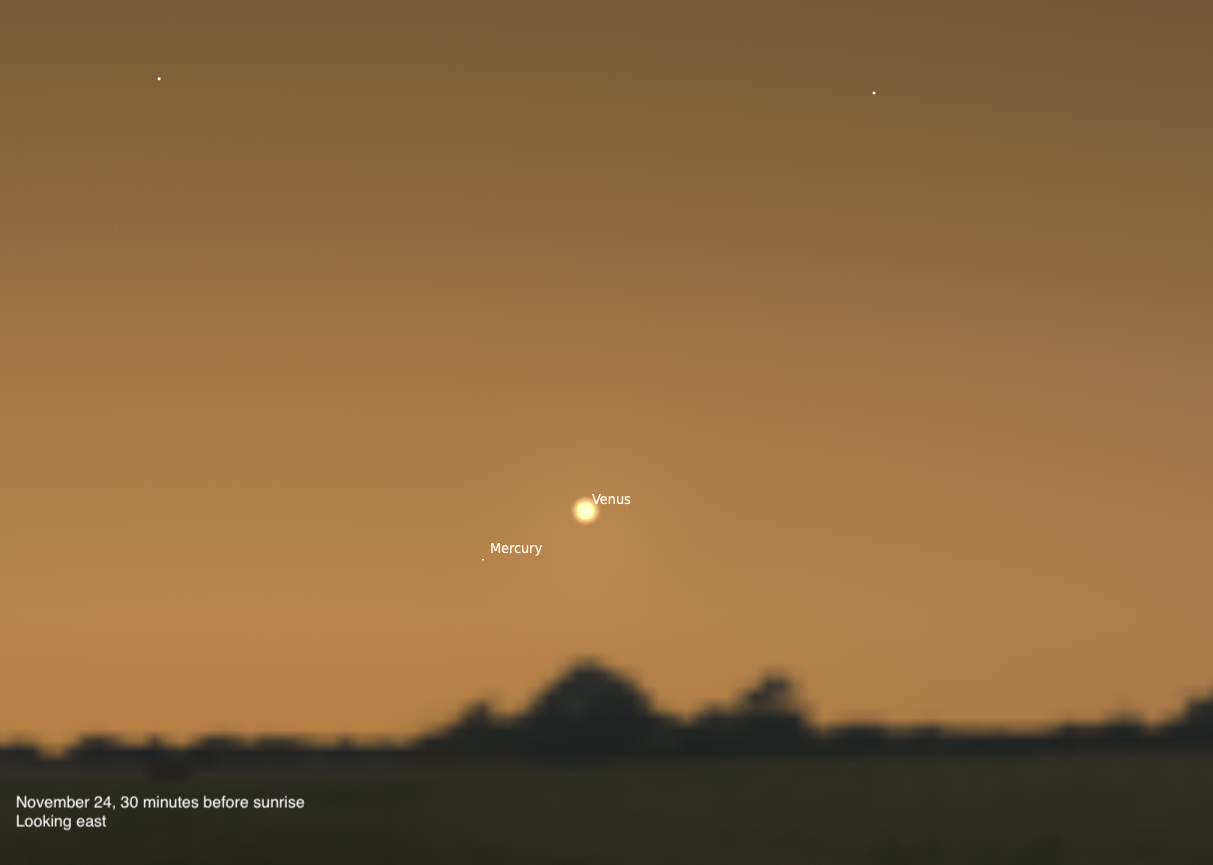
Mercury is located just to the lower left of Venus. Above them are Alpha (α) and Beta (β) Librae, fading quickly in the growing twilight. The two planets will rise as sunrise approaches, but the sky will also brighten accordingly.
If you have a telescope, you can view the planets’ disks as well. Mercury shows off a 9”-wide disk, of which only a thin crescent is illuminated, just 7 percent lit. Venus’ disk is only a little larger — 10” — but shows the opposite phase, a gibbous that is nearly fully illuminated at 98 percent lit.
Make sure to put away any optics at least several minutes before sunrise from your location.




